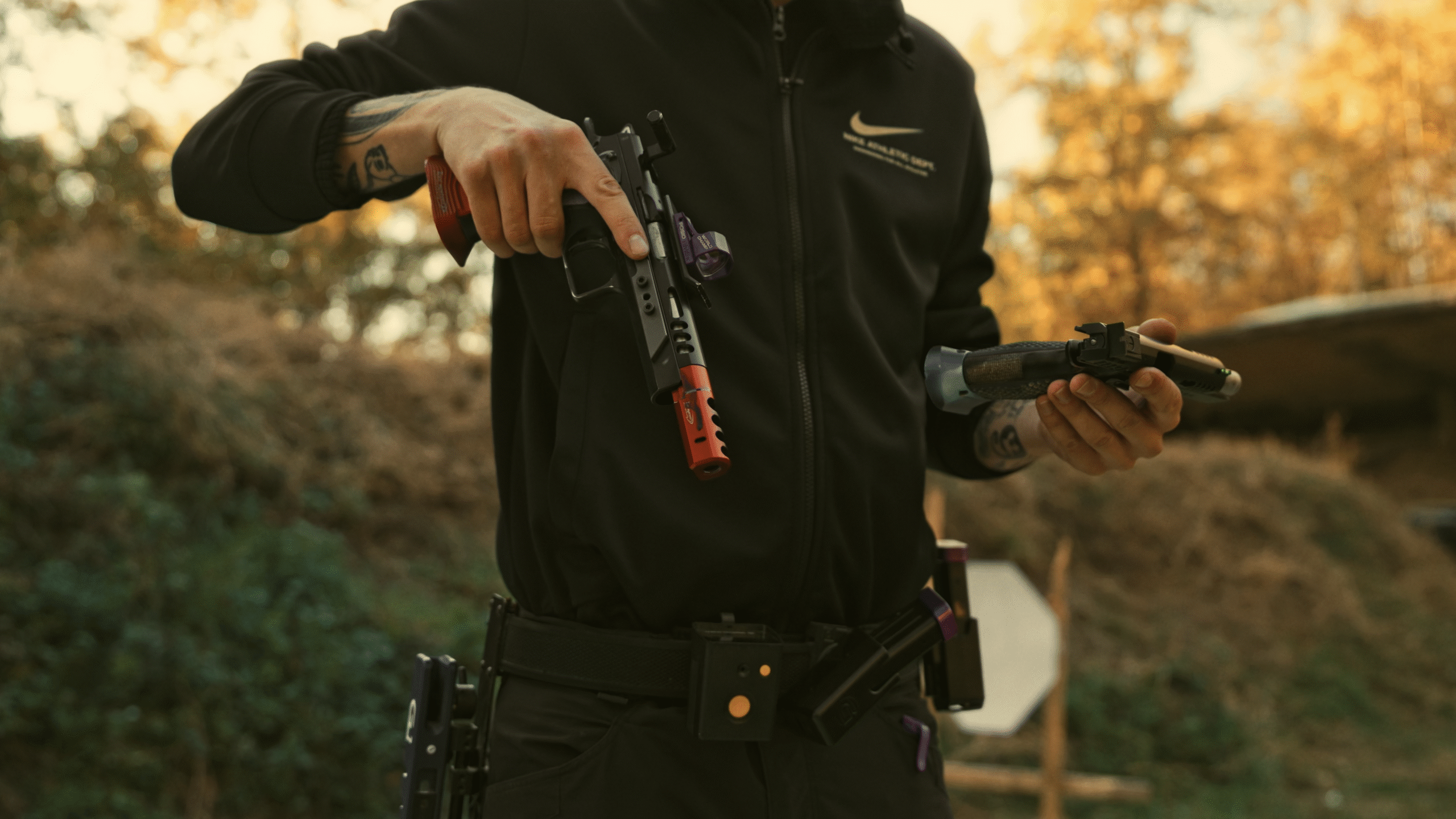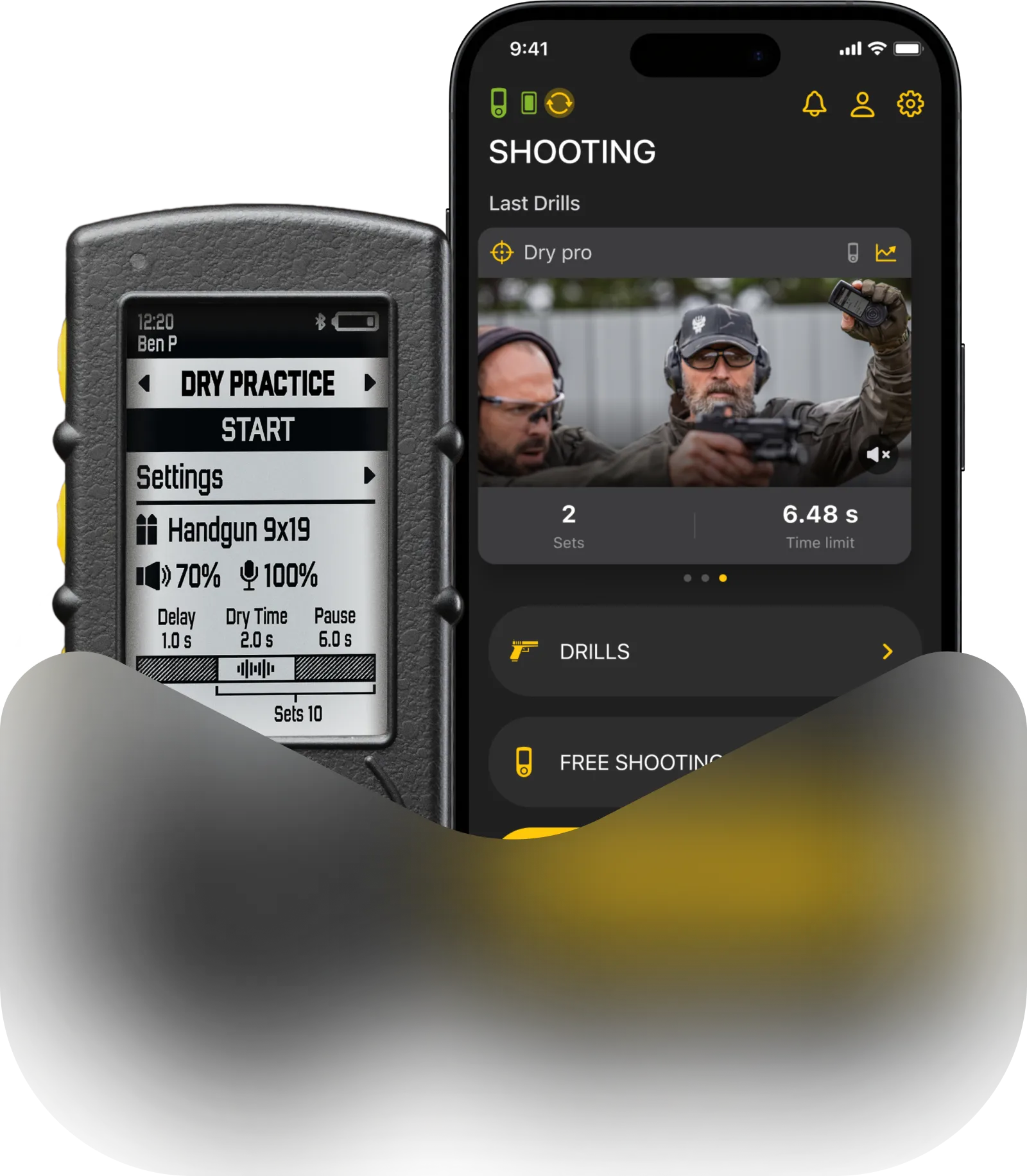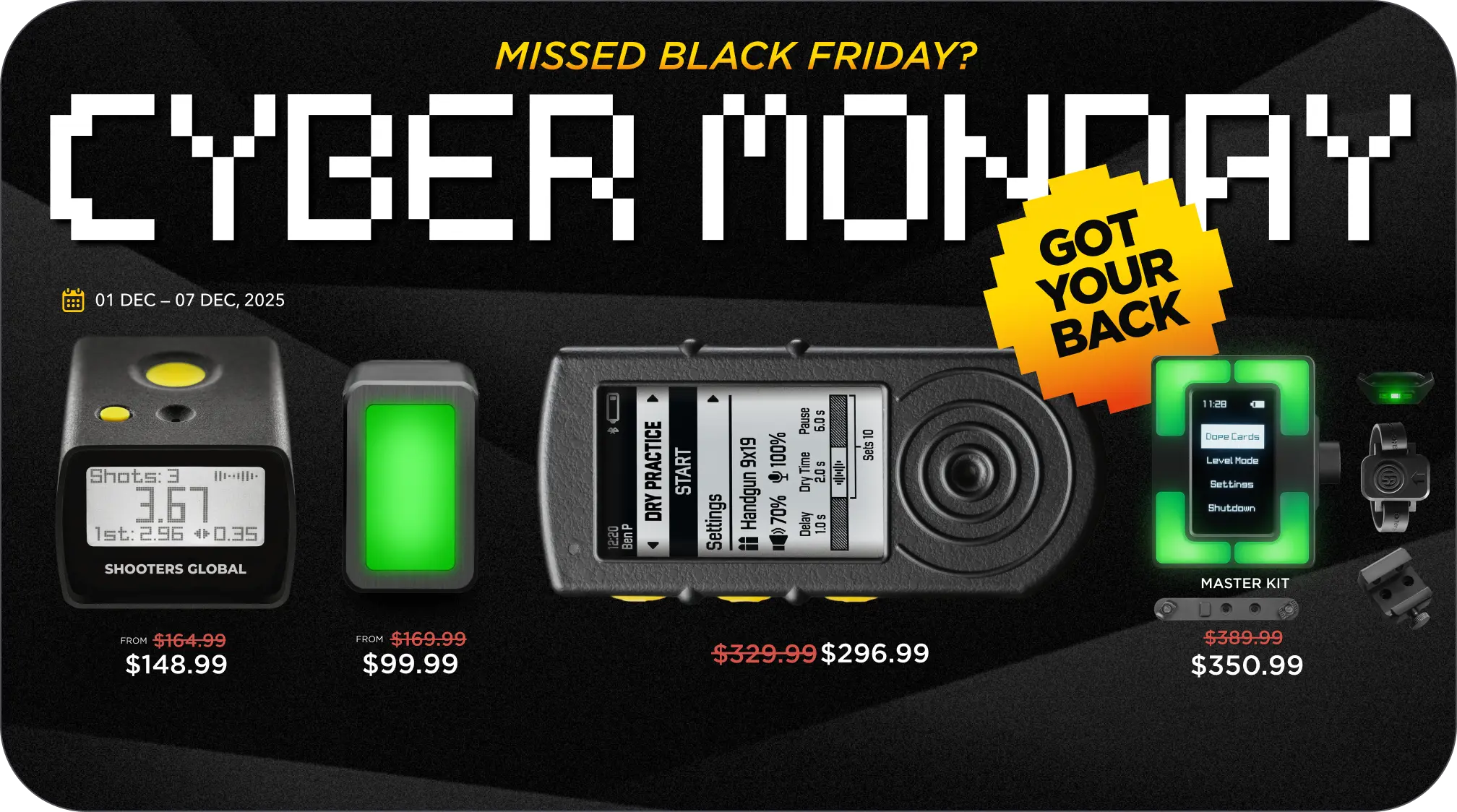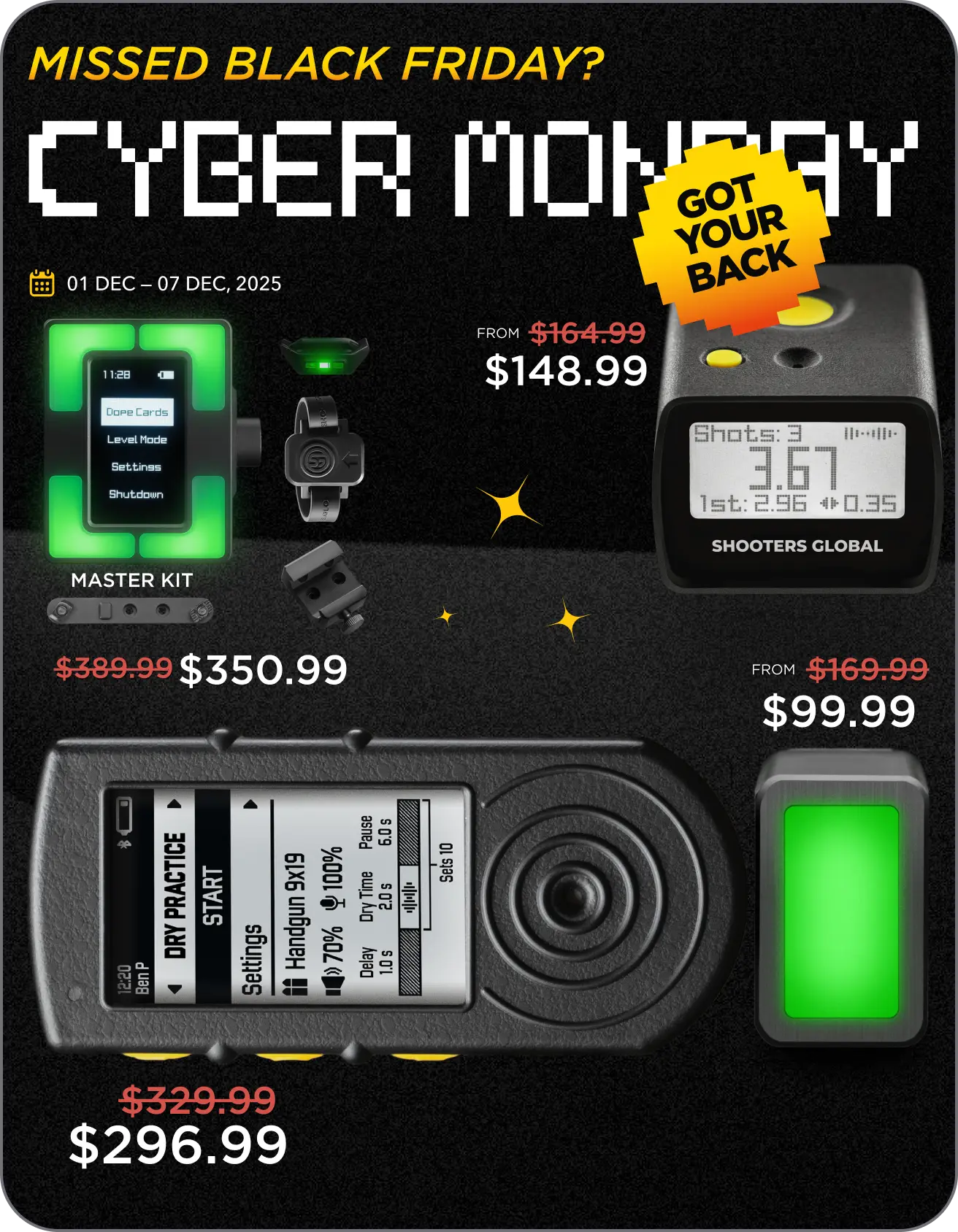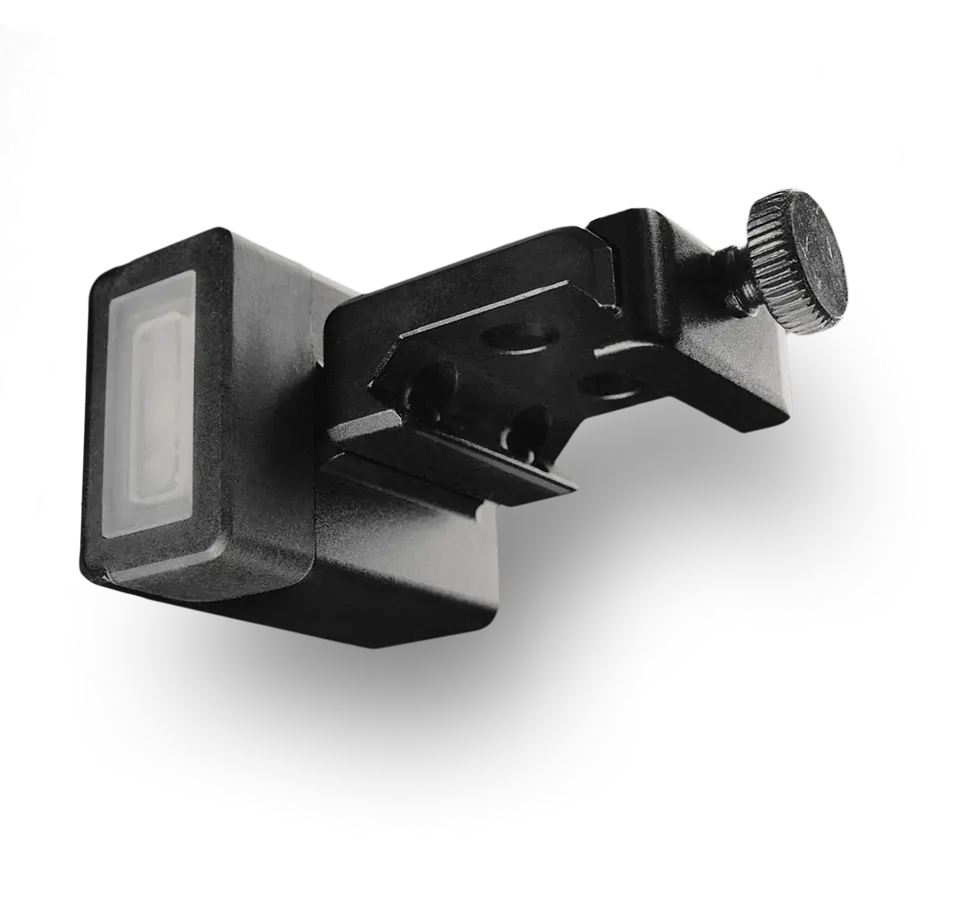If you’ve just bought your first pistol — or are planning to — you’ve probably asked yourself:
Should I start with iron sights or invest in a red dot sight? Which one is faster, more accurate, and better for learning proper shooting technique?
In this video breakdown, we hear directly from POSIO — IPSC Junior World Champion — who shares his experience comparing iron sights vs red dots in real shooting drills. While many shooters assume the red dot is always faster, POSIO shows that the reality is more nuanced.
“With a red dot, we only have to align one thing — the dot with the target. With irons, we align three: rear sight, front sight, and target. So naturally, there’s more going on.” — POSIO
But does that make iron sights slower in every case? Not necessarily.
According to champion, red dots do help with seeing mistakes during the shot — especially during trigger press — but at certain distances, iron sights can actually keep up if your draw and index are solid.
To make it clear, he runs live fire tests at close, medium, and long distances, comparing his times and hits using both systems.
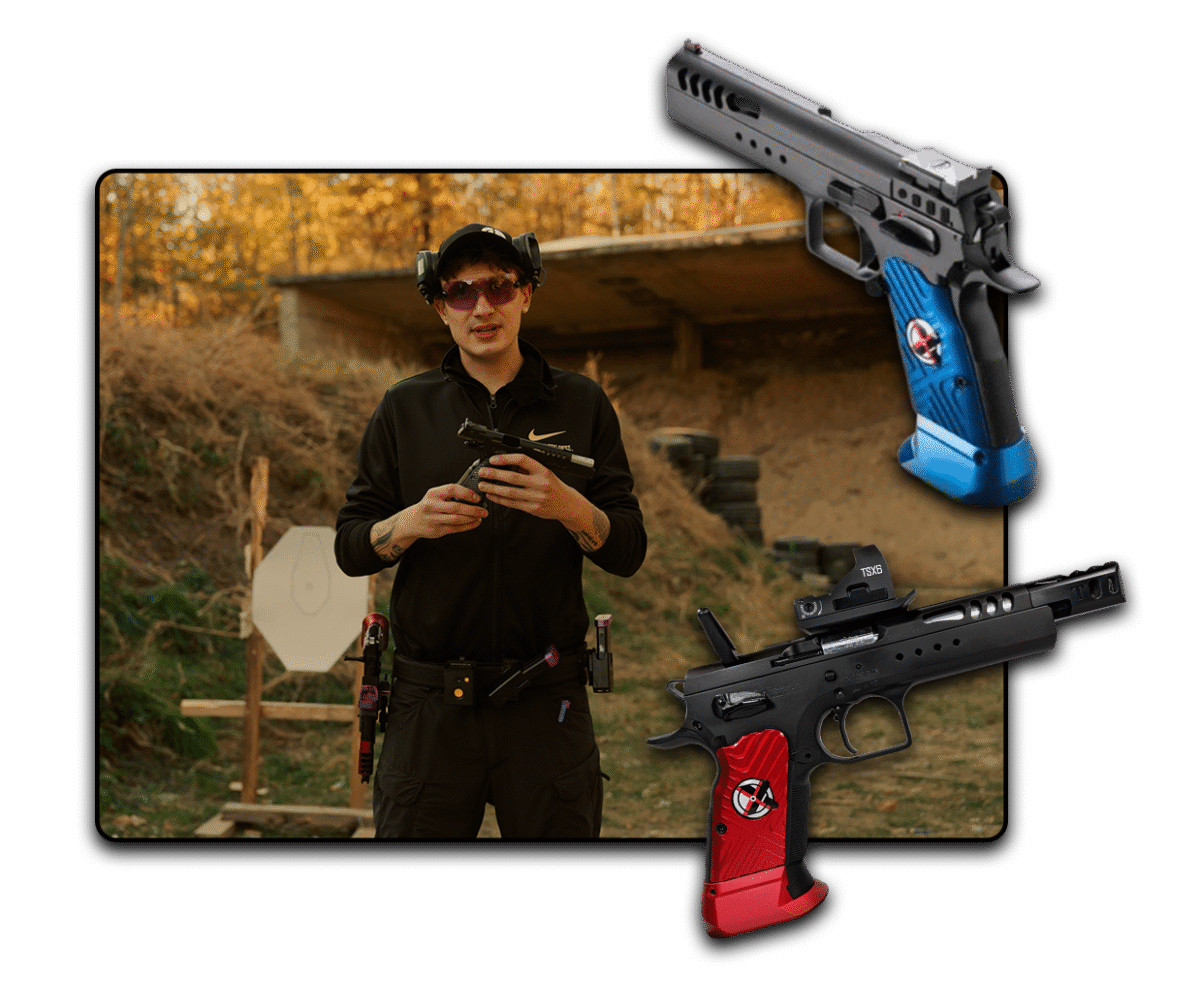
To keep things fair, POSIO uses two nearly identical pistols: a Tanfoglio Limited Custom Extreme with iron sights and a Tanfoglio Domina Extreme with a frame-mounted red dot.
Testing Setup
To compare iron sights or red dot at different ranges, he sets targets at 5, 10, and 15 meters.
For each distance, he fires one shot with a red dot, then one with iron sights.
The drill created in Drills App uses 6 sets, 1 shot per set, and a 10-second pause between them to switch guns. SG Timer GO is controlled remotely, so all focus stays on the shooting.
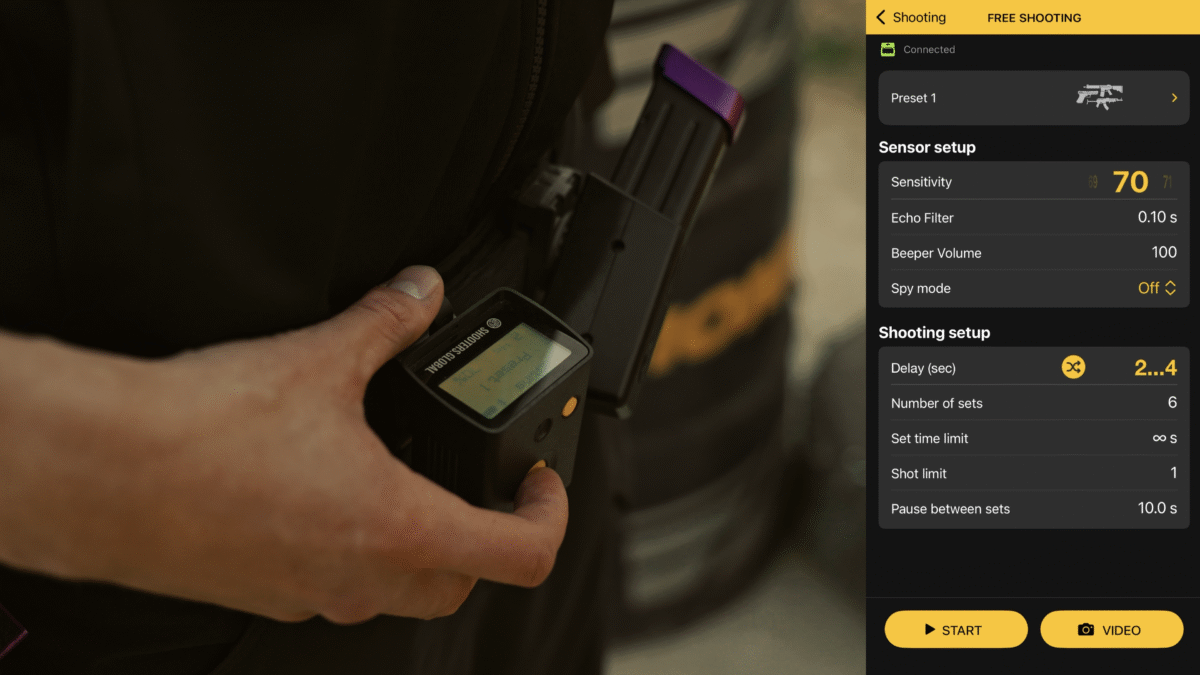
At close range, POSIO starts with the red dot pistol, then switches to irons.
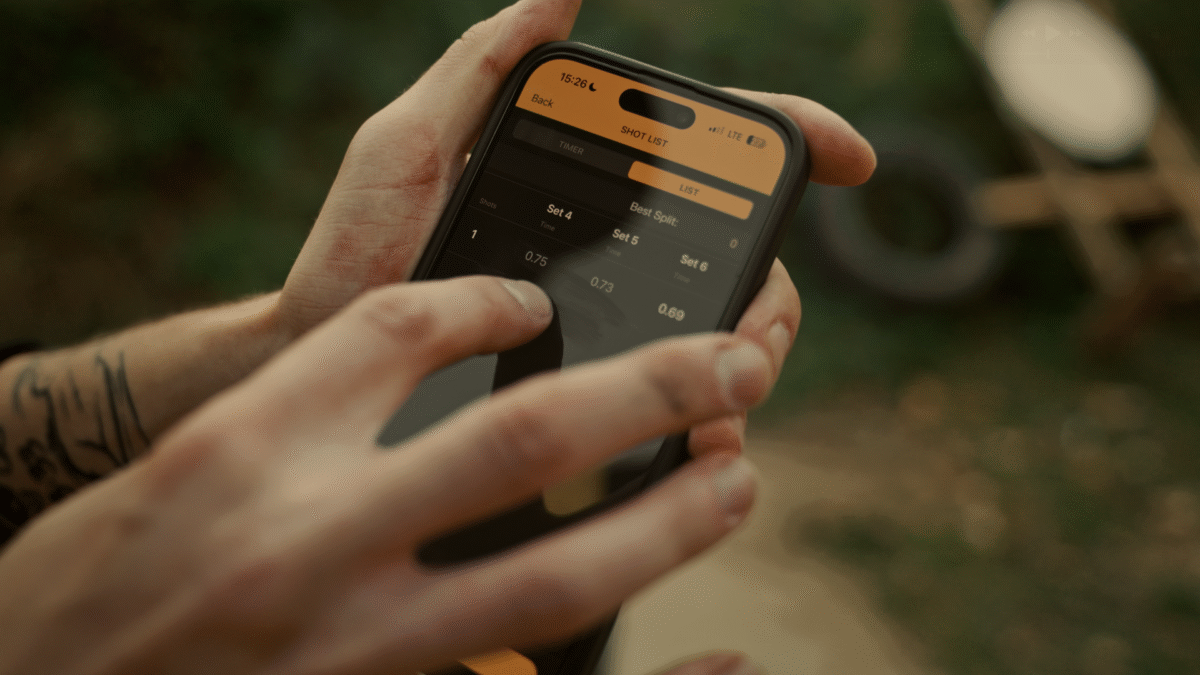
⏱️ “First shot with the red dot — 0.78. Irons — 0.75, but a Charlie hit,” he notes.
Across three runs, iron sights consistently edged out the red dot, even producing an Alpha hit on the third attempt in just 0.69 seconds.
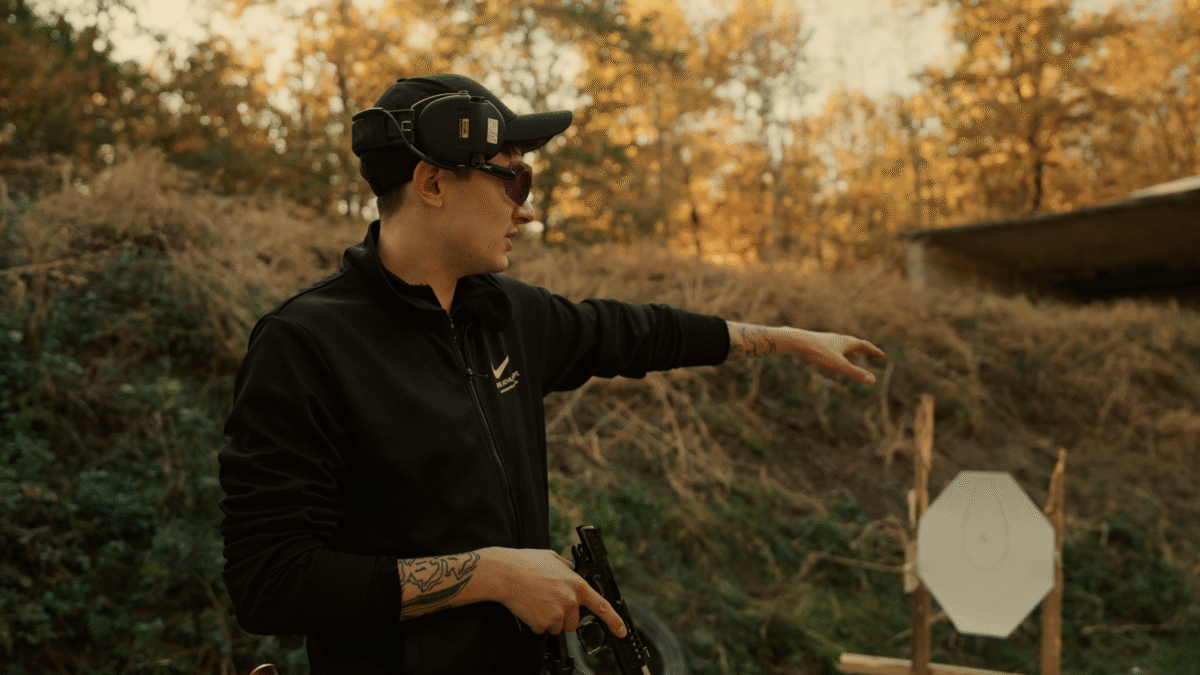
Why irons win up close?
“At 5 meters, aligning iron sights is faster. I see the sights during the draw — no need to hunt for the dot.”
He adds that the Alpha zone favors quick vertical alignment, letting him react off his fiber front sight.
Result: Iron sights take the win at 5 meters.
Iron Sights & Red Dot on 10 and 15 meters
Moving to 10 and 15 meters, the picture begins to shift.
“I struggled with finding the dot at first,” POSIO admits, “but then both red dot and iron sights hit Alpha at the same time — 1.17 vs. 1.15.”
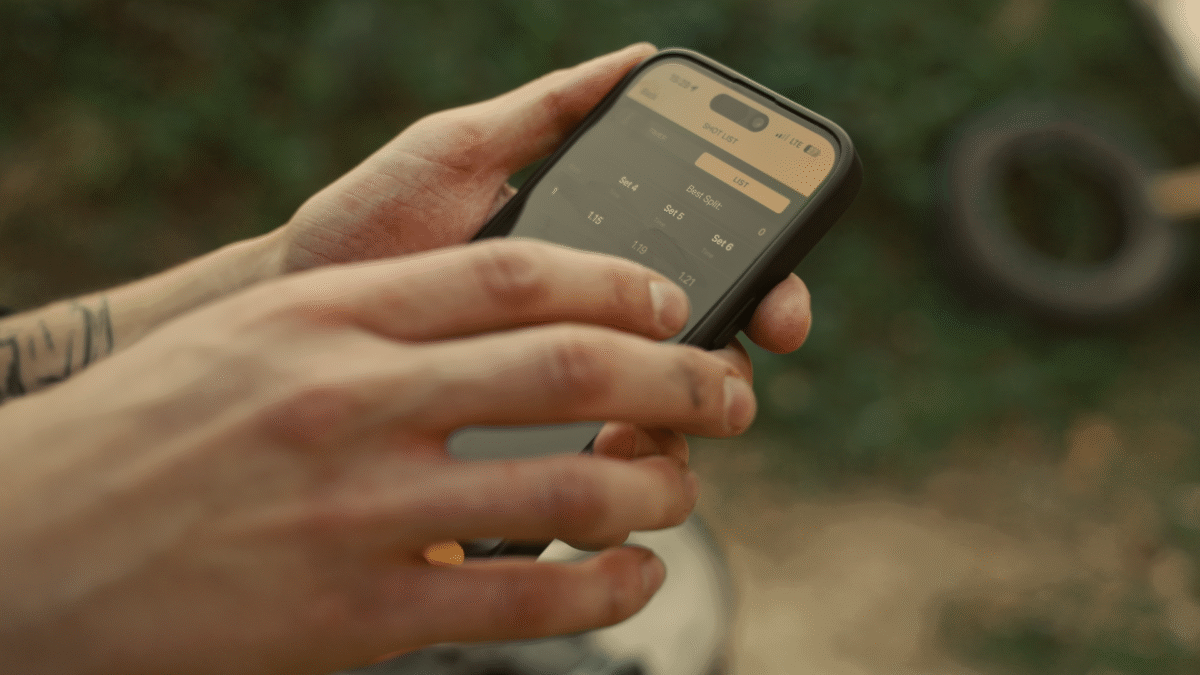
As the distance increased, mistakes with irons became more visible: “I saw the front fiber, but didn’t align it with the rear sight — and got Charlie hits.”
At 15 meters, the red dot consistently showed its advantage:
⏱️ Open (dot): 1.22, 1.57, 1.36
⏱️ Iron sights: 1.42, 1.51, 1.41
“That’s where the red dot pulls ahead. It gives you feedback and helps you stay on target — especially at longer distances.”
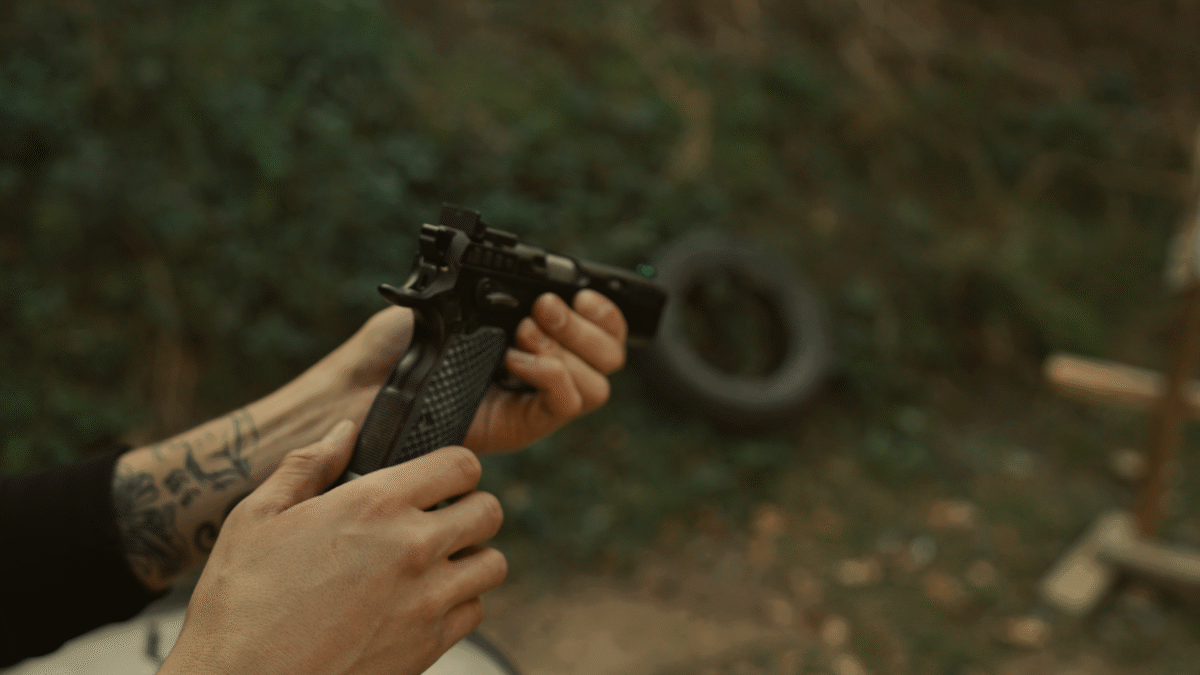
That shows that iron sights can be slightly faster on close-range targets, especially if your draw and index are solid — you can match dot speeds.
But the real gap starts showing at longer distances.
That’s where red dots offer advantages — they help you identify mistakes through the visual feedback of the dot and let you acquire the target faster. That’s where optics can save you time.
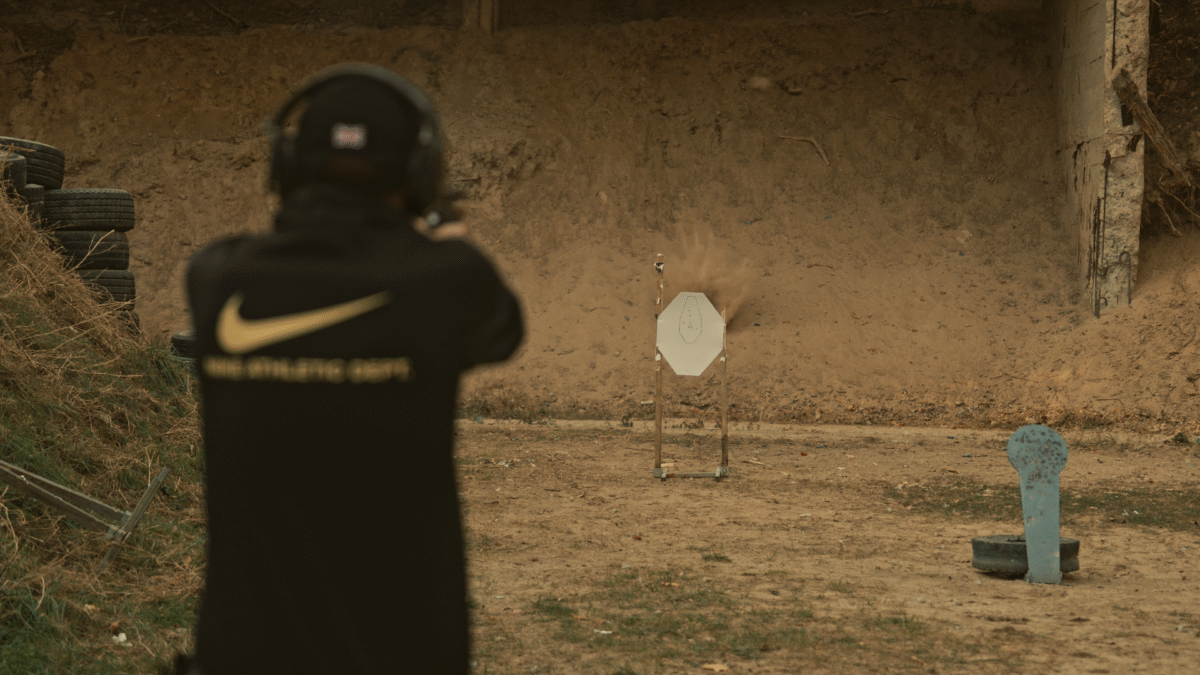
Tags: Drills app, dry fire, sg timer, SG Timer 2, Shooters global, shooting timer, shot timer

